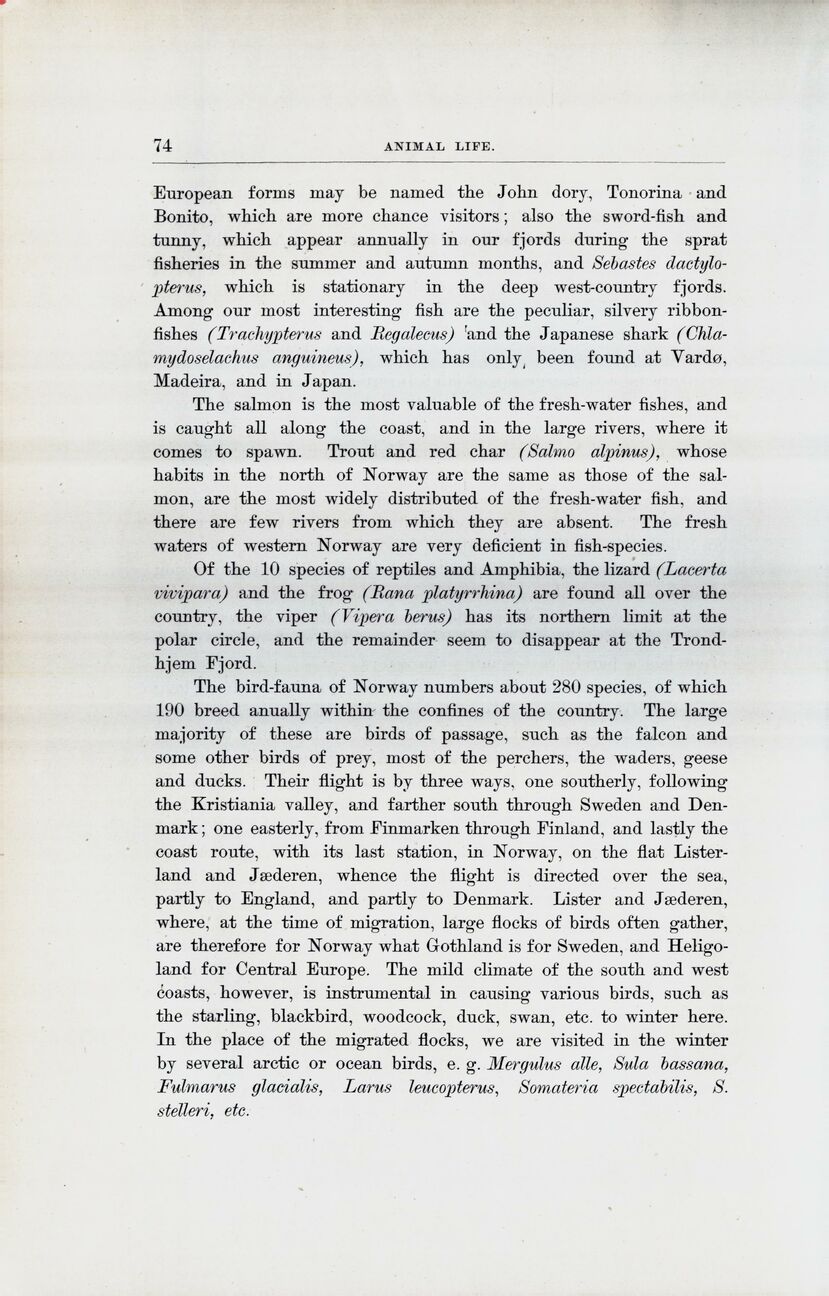
Full resolution (JPEG) - On this page / på denna sida - Animal Life, by James A. Grieg

<< prev. page << föreg. sida << >> nästa sida >> next page >>
Below is the raw OCR text
from the above scanned image.
Do you see an error? Proofread the page now!
Här nedan syns maskintolkade texten från faksimilbilden ovan.
Ser du något fel? Korrekturläs sidan nu!
This page has been proofread at least once.
(diff)
(history)
Denna sida har korrekturlästs minst en gång.
(skillnad)
(historik)
European forms may be named the John dory, Tonorina and
Bonito, which are more chance visitors; also the sword-fish and
tunny, which appear annually in our fjords during the sprat
fisheries in the summer and autumn months, and Sebastes
dactylopterus, which is stationary in the deep west-country fjords.
Among our most interesting fish are the peculiar, silvery
ribbon-fishes (Trachypterus and Regalecus) and the Japanese shark
(Chlamydoselachus anguineus), which has only been found at Vardø,
Madeira, and in Japan.
The salmon is the most valuable of the fresh-water fishes, and
is caught all along the coast, and in the large rivers, where it
comes to spawn. Trout and red char (Salmo alpinus), whose
habits in the north of Norway are the same as those of the
salmon, are the most widely distributed of the fresh-water fish, and
there are few rivers from which they are absent. The fresh
waters of western Norway are very deficient in fish-species.
Of the 10 species of reptiles and Amphibia, the lizard (Lacerta
vivipara) and the frog (Rana platyrrhina) are found all over the
country, the viper (Vipera berus) has its northern limit at the
polar circle, and the remainder seem to disappear at the
Trondhjem Fjord.
The bird-fauna of Norway numbers about 280 species, of which
190 breed anually within the confines of the country. The large
majority of these are birds of passage, such as the falcon and
some other birds of prey, most of the perchers, the waders, geese
and ducks. Their flight is by three ways, one southerly, following
the Kristiania valley, and farther south through Sweden and
Denmark; one easterly, from Finmarken through Finland, and lastly the
coast route, with its last station, in Norway, on the flat
Listerland and Jæderen, whence the flight is directed over the sea,
partly to England, and partly to Denmark. Lister and Jæderen,
where, at the time of migration, large flocks of birds often gather,
are therefore for Norway what Gothland is for Sweden, and
Heligoland for Central Europe. The mild climate of the south and west
coasts, however, is instrumental in causing various birds, such as
the starling, blackbird, woodcock, duck, swan, etc. to winter here.
In the place of the migrated flocks, we are visited in the winter
by several arctic or ocean birds, e. g. Mergulus alle, Sula bassana,
Fulmarus glacialis, Larus leucopterus, Somateria spectabilis, S.
stelleri, etc. [[** kursiv sic, for langt]]
<< prev. page << föreg. sida << >> nästa sida >> next page >>